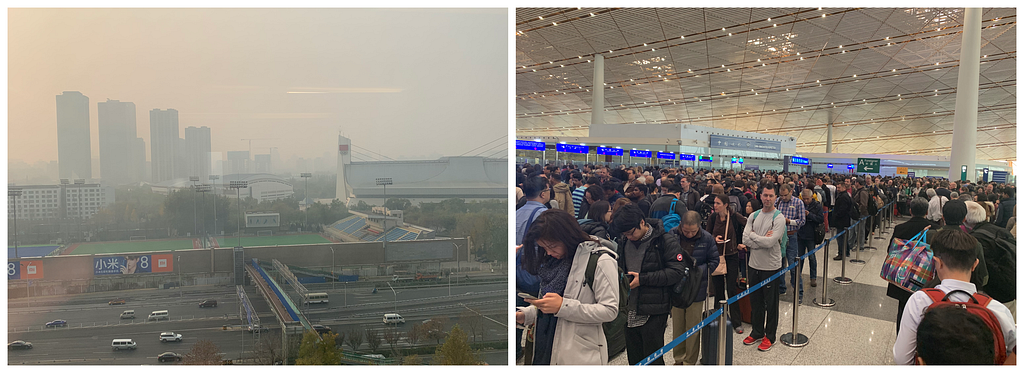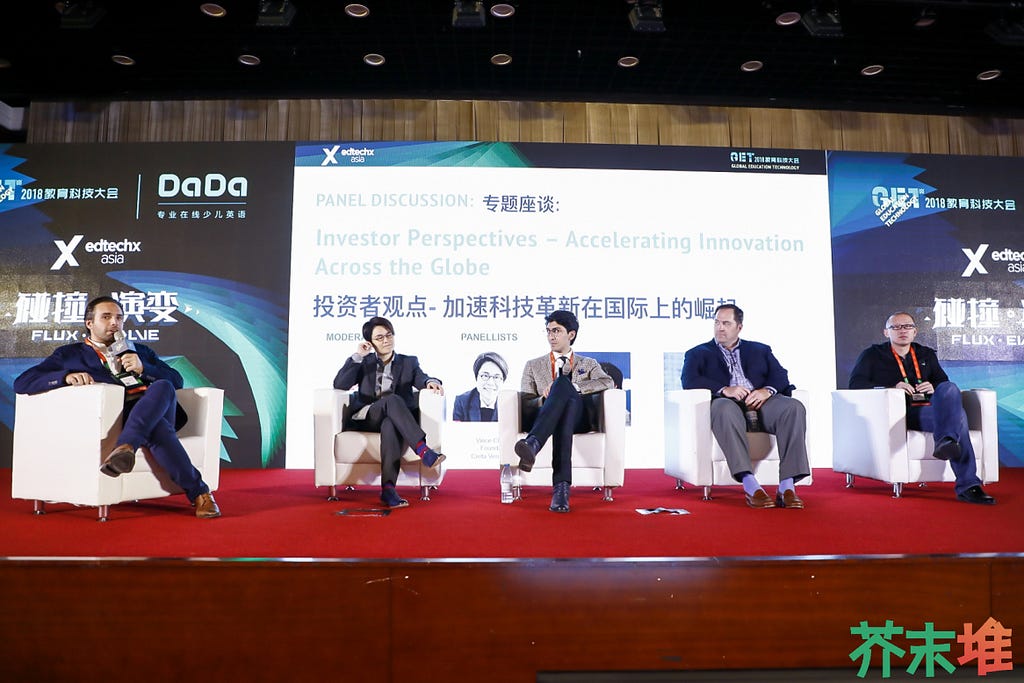The 1+8 Things You Need to Know About Edtech in China
The shift to doing good, creating a holistic education program and 8 nuggets about Edtech in China
Earlier this month, Beijing hosted one of the largest education technology conferences in the world. This time last year, the GET Summit brought together 6,000 attendees – they doubled this year. 12,000 attendees from all over the world landed in smoggy Beijing to wheel-and-deal, greet-and-meet and educate themselves (pun intended).

This is a summary of thoughts and observations from the summit. It will be split into 2 segments: the plenary session’s keynotes and everything else.
A plenary session is basically the stage-of-stages. It’s where all the main guests present; in Beijing, where all the reporters and government officials (and everything in between) gather. It was kicked off by from Tencent.

Tencent went from powerhouse that could do no wrong, to being criticized by the Ministry of Education of China for addictive non-productive games. It lost $160 billion in value, roughly a Netflix equivalent, due to the backlash. This set up for an interesting keynote by Daosheng Tang, Vice President. The VP delivered a speech at GETSummit that in short, summarised Tencent as a socially responsible tech company. No longer was the focus to attract users to it’s entertainment ecosystem (it owns Clash Royale, Clash of Clans, League of Legends, Wangzhe Rongyao, and 42 percent of China’s gaming market; equivalent to almost half of Tencent’s profits). Mr Tang’s speech had zero mention of entertainment, but lots of mentions of helping underprivileged communities, and helping said community members upgrade their skills, etc. The 180 degree change was made crystal clear to everyone watching, and now Tencent is going to do everything to leverage their wide reach (e.g. WeChat is used by 83% of Chinese smartphone users) for the greater good of the Chinese people.
Once you have the biggest player fall into line, typically others follow suit. Ensuing Tencent’s socially responsible tech company speech — TAL Education Group was up next.
Last year’s summit, STEM education was all the rave. The conversation revolved around getting more STEM in the classroom, in the tutor groups, and into homes. That sentiment no longer held up. Songye Zhou, General Manager at TAL, talked about how home/family education is critical but it must be founded on love, morality and spirituality. The focus should be less on “hard” education (read: standardised test) and focus on “soft” education.
As the plenary session progressed, it was clear that all the companies got Beijing’s memo. You must focus on being good and doing the right thing. DadaABC, Netease, and the remaining Chinese education firms echoed the same sentiment as their larger peers.
Contrast this to what has been happening with the largest companies in the US, such as Facebook and Amazon. This just shows how companies react to regulatory pressure, what goes through the senior managements’ thoughts, and ultimately how that trickles down to the users.
On other nuggets from the conference, we will do a quick hitting point-by-point summary:
When in China, use Chinese lucky numbers — we are capping the nuggets at 8.

- WeChat still runs supreme. It’s on the local’s tongue, mind and (most importantly) phones. Very few non-Chinese truly understand WeChat and its reach/power. This is shocking, given it’s been huge for more than half a decade now.
- On a similar note, KOLs (aka influencers) are big. KOLs in China are bigger. Mom KOLs in China are the biggest. The best way to spread the word amongst Chinese Edtech consumers is through KOL Moms.
Side-only-in-China-note: one of the keynotes was given by a private tutor —Kaiwen He. Key nugget is this private tutor has 6.6 million followers on Weibo (Kobe Bryant has 9 million Instagram followers). - Beijing’s de-emphasis of standardised exams, combined with change of wind sweeping “hard” education away. Beijing is aware that the population needs to be more creative, holistic and value-add; precisely what they are addressing.
- Saying a lot by not saying anything: Not a single mention of the ongoing trade-war. Even though the event had almost 1,000 non-Chinese attendees.
- B2B businesses, especially in Education are still in the early stages of their development. Most of the successful Education businesses in China are in B2C space. The conference reflected that, where most of the “market entry” strategy workshops were focused on how to get the parent/family/ student to buy in, rather than the school/university/corporate.
- There is a growing positive sentiment amongst Chinese Edtech to sell to markets such as Turkey, Russia and other markets shunned by the US/European players. Chinese Education companies feel the consumer behavior is closer to their own, compared to US/European markets.
- Pricing is critical in China. The more ways you can price your product, the better off you are. Group buying, term/yearly discounts, rebates on social shares — and everything in between. The more ideas you have on your pricing, the better chances you can sell, and ultimately succeed.
- Valuations are cooling down. Cooling down is a relative term, but going from crazy to not crazy is still cooling down. Long term everyone is better off; short term, founders will have a slightly harder time fundraising.
The global ecosystem goes in waves of increased and decreased volatility. This isn’t a new concept, but what is clear that each wave requires ever fresher approaches and ideas. Therefore, companies and individuals that are more adaptable and creative will flourish. Beijing knows that.
The 1+8 Things You Need to Know About Edtech in China was originally published in Fusion by Fresco Capital on Medium, where people are continuing the conversation by highlighting and responding to this story.